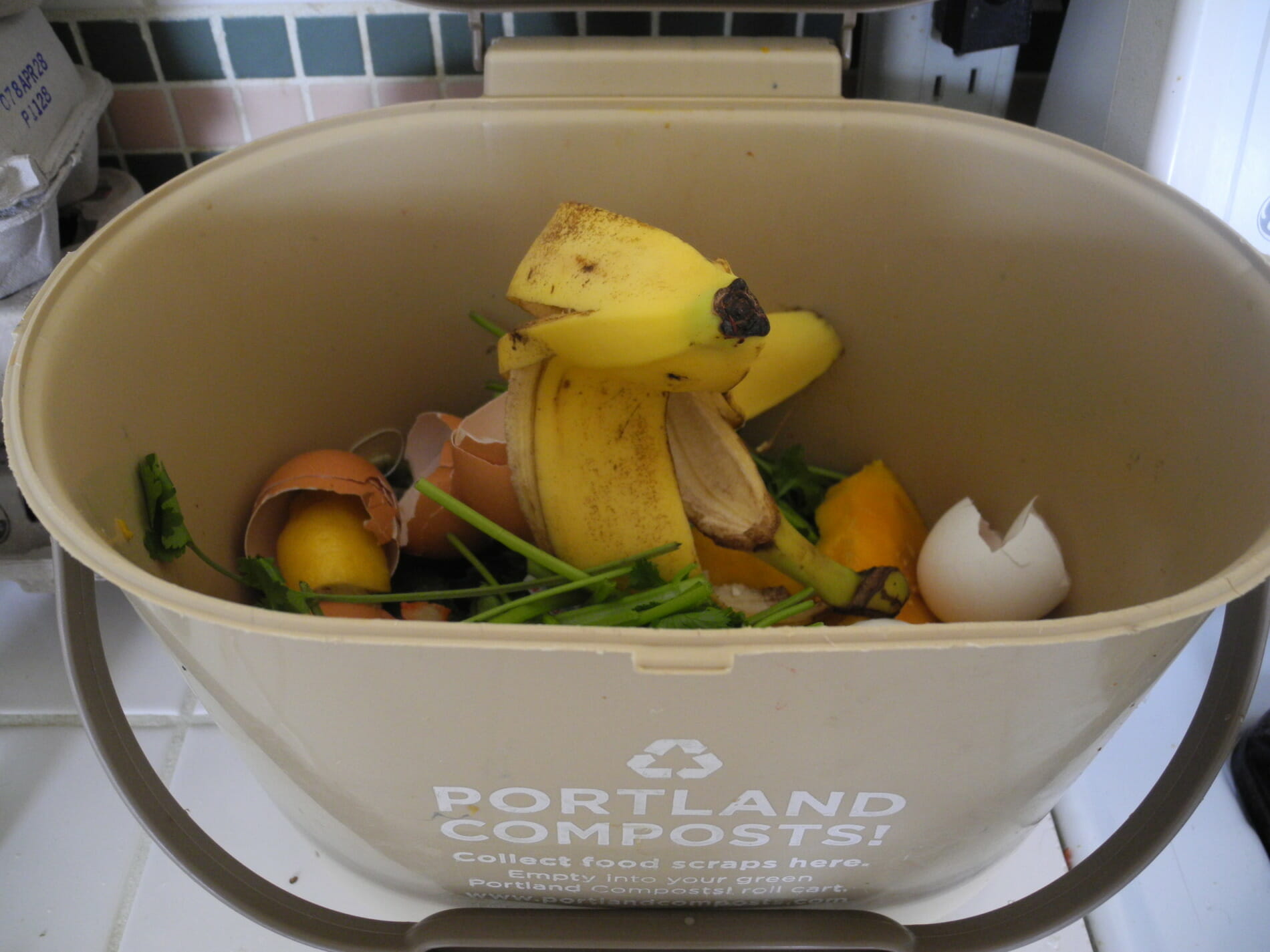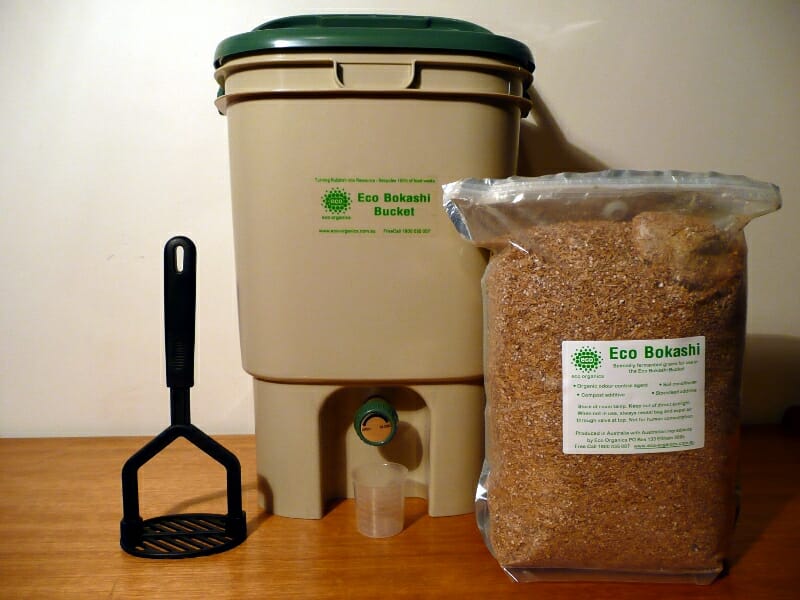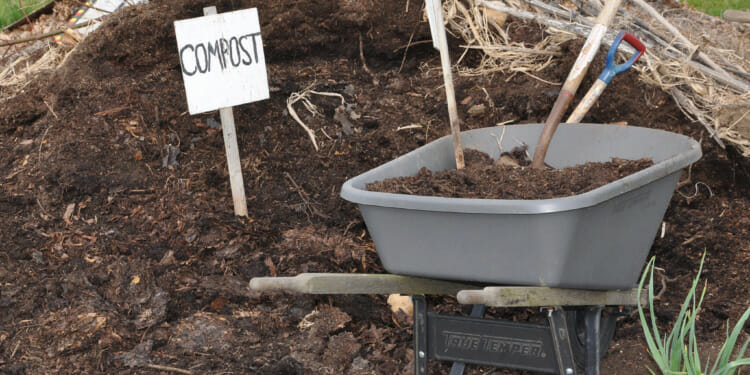Food waste is one of those things that consumers usually don’t feel so guilty about dumping in the trash. After all, unlike plastics, old dinner scraps are organic and decompose in the landfill, right? False. This line of thinking has made people overlook the environmental benefits of composting.
Because our landfills are so full of garbage, there isn’t enough oxygen, sunlight or microorganisms living beneath the surface to help the decomposition of food matter. The result is endless amounts of undecayed foods trapped beneath mounds of trash bags. American archaeologist William Rathje unearthed tons of trash piles, only to find perfectly preserved forty-year-old hot dogs, some guacamole from 1967, and heads of lettuce from the ‘70s.
The organic materials which do biodegrade in landfills do so very slowly and release tons of greenhouse gasses into the air. This is why government organizations have allocated a superfund site in many locations to control the pollution.
Considering that the average E.U. inhabitant wastes around 173 kilograms of food per year, there is a huge amount of organic material, Styrofoam boxes, and plastics overcrowding our landfills.
Fortunately, this is a problem that every single person can tackle with composting.
‘What if I don’t have a garden?’ you may be wondering. Not to worry. Although having a garden is useful for composting, owning one is not a requirement. City-dwellers can have convenient and effective no-stink composts in their kitchens as well.
If you’ve been thinking about shifting to zero-waste lifestyle, or simply want to minimize your carbon footprint, composting is an easy and useful way to do so.
Vermicomposting
Worms are a powerful weapon for breaking down lots of organic material in a fast and odorless process. If you’re interested in turning your old kitchen waste into nutrient-rich fertilizer for your garden or houseplants, vermicomposts, or worm bins, can’t be beaten.
To get started, you’ll have to decide how you’d like to obtain your worm bin. Consider the amount of food scraps per week, how many worms you’ll want, and the amount of space you can dedicate to it.
The good news is: if you have enough room for a bucket in your home, then you’ve got room to house your worms. Worms like to live in the dark, so set your worm bin in a cabinet or under the sink to keep them happy.
There are plenty of fancy vermicompost containers on the market, but DIY worm bins can do the trick. DIY worm bins can be made out of many materials that you can find lying around the house. Most people use opaque plastic tote bins.
No matter which type of container you use, aeration is key. If you choose to use a plastic bin, add many holes so that plenty of air can pass through, preventing water logging. You’ll also want to add a plastic tray under your worm bin to catch any liquid that may leak from the air holes. If you want to easily harvest the worm castings, then you may find it useful to have two bins stacked one upon the other. Be sure to drill holes in your second container as well to promote aeration.
After you have your container, lay out some “brown” material bedding such as junk mail, cut up toilet paper rolls, or shredded egg cartons. Hydrate your bedding by spraying it with water so that it is moist but not soaking. Add soil to the top of your brown materials.

Vermicomposting is all about keeping a good balance of carbon and nitrogen so that the organisms living in your compost can flourish. Carbon or “brown” waste includes:
- Paper
- Cardboard
- Newspapers
- Egg cartons
- Dry leaves
- Dryer lint
Before adding your worms add in some “green” materials, like apple peels and let them sit for several days to increase microbial growth. Nitrogen or “green” waste will mostly be the scraps from your kitchen:
- Old food
- Coffee grounds
- Tea grounds
- Eggshells
- Hair
- Freshly cut grass can be used – but beware of introducing insects if your compost is indoors.
While your vermicompost can decompose lots of kitchen waste, there are some things to avoid tossing in the worm bin:
- Glossy or waxy paper, plastic, or stickers. Remove those fruit stickers before throwing peels into the worm bin – your worms will thank you.
- Tea and coffee should be removed from their bags, as most contain synthetic fibers that are unpleasant to your worms.
- Citrus peels and onions are too acidic for worms.
- Meat and fish should not be thrown in your worm bin as they will attract pests and smell bad.
- Avoid oils (olive, vegetable, sesame, butter), and fried or highly processed foods. Oily and fatty foods are very difficult for worms to break down.
- Cat, dog, or human feces. While you can add herbivore feces, we recommend against it in a small urban space.
- Salty foods can kill your worms.
Red wiggler worms are usually utilized for indoor composting as they thrive in the same temperatures that we keep in our homes. This means that housing your worms on a balcony may not be ideal during cold months, as cold temperatures may harm them.
Vermicomposting, when working correctly, should not stink. A healthy worm bin should smell earthy like soil. In case you have a problem with your worm compost, consult a troubleshooting website to find answers to all of your questions.
While vermicompost seems challenging, you’ll find that the worms are quite forgiving and love to break down your nutritious waste.

Bokashi Bucket
Unlike worm composting, bokashi composting is a process in which food waste is decomposed anaerobically, or in an oxygen-free environment. The major advantage of bokashi composting is that it can break down any kitchen waste, including matter that a regular aerobic compost can’t – like meat or dairy products.
Bokashi buckets also don’t attract pests, which can be a concern when employing other methods of composting. Because the bokashi fermentation is essentially pickling your old scraps, rodents will not be interested in eating from them. Even better, bokashi buckets make terrible nurseries for insects like fruit flies or pathogens due to their acidity.
To begin, you’ll need a bucket with an airtight lid. You can either buy a brand name bucket, or you can save money and create your own. Aside from a tight seal your bucket will need a drain at the bottom, so that you can collect the liquid from the fermentation.
You will be putting two things in your bucket: kitchen waste and bokashi. Bokashi is a fermented bran that is inoculated with a specific type of bacteria which will break down your food scraps. You can buy bokashi online or make your own.
Add scraps in the bucket each day, sprinkling a tablespoon of bokashi on top and then compress it with a plate to eliminate air. Each day you seal the bucket back up again.
Every other day you should drain the fluid or bokashi juice from the bucket using the drain at the bottom of your bucket. The juice you harvest from this process is very useful. Pouring it down your sink or toilet is an effective way of breaking down sludge and organic materials blocked in drains.
You can also use this juice as a fertilizer. Because the bokashi juice is so acidic, diluting it with water with a ratio of about 1:100 is necessary to protect your plants. Whatever you do with your bokashi juice, be sure to use it within 24 hours as you don’t want it to spoil.
Once your bucket is full, leave it sealed for several weeks. After it’s had time to ferment over this period, you’ll need to dispose of the compost. If you have access to a garden, you can dig a hole and pour it in. Otherwise, you can donate your bokashi compost to a community garden, school, neighbor, give it to a city service, or create a soil factory.
Dos
- Use plenty of bran. Using too little will make your bucket stink. A healthy bokashi bucket will smell like sauerkraut.
- Remember to drain bokashi juice every other day.
Don’ts
- Avoid adding deep fryer fat or oils.
- Do not add food with green or black mold as it may interfere with the bokashi microbes. However, you can add food with white mold.
- Do not pour your bokashi juice directly onto your plants – doing so will kill them as the juice is highly acidic.

Composting Alternatives
If you don’t have the time, space, or energy to compost from your home, there are plenty of alternatives to throw your food waste:
- Donate your scraps. Most community gardens have composts and are happy to use your nutritious food scraps to enrich their garden. Some schools have gardens as well, so try inquiring about their participation in composting. Save up your old food in a bag or bucket and gift it to your community!
- Use a curbside compost service. To reduce landfill waste, many cities offer curbside compost services to collect your unwanted organic materials. Otherwise, you can always hire a private company for a small fee.
- If you know any neighbors who have a garden, ask them if they are interested in helping reduce waste by utilizing your leftovers.
Composting is an easy way to do your part in reducing landfill waste and harmful greenhouse gas emissions. If you, or someone you know, enjoys gardening with potted plants, your compost can provide excellent nutrient fertilizer that will help a plant’s health.
Remember that composting can be done from indoors and will not stink or attract pests. You can donate your scraps to a community garden and do your part to improve air quality and reduce landfill waste.
Editor’s Note: The opinions expressed here by Impakter.com contributors are their own, not those of Impakter.com. — In the Featured Photo: Outdoor compost mound and tools. Featured Photo Credit: Oregon State University










